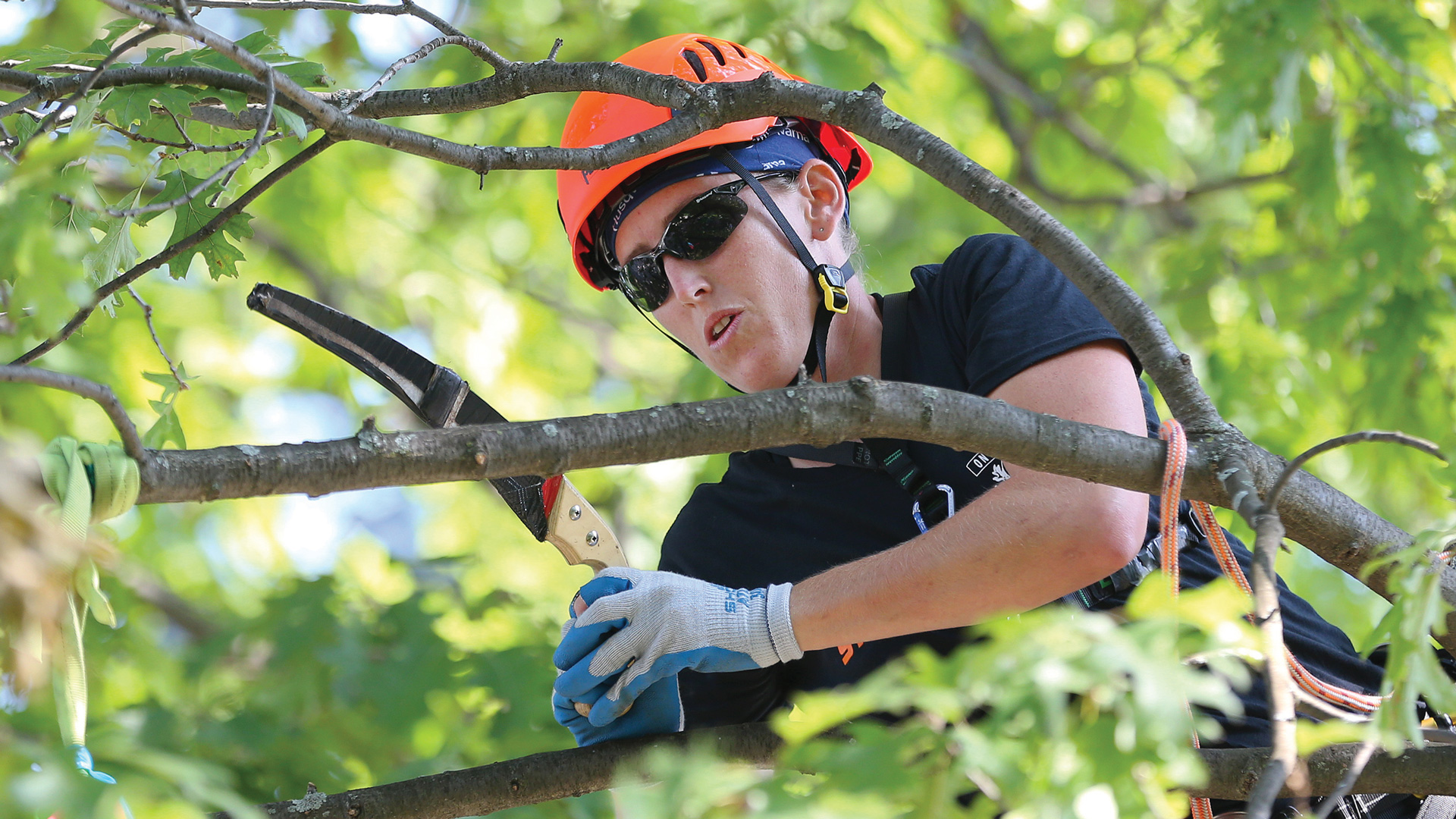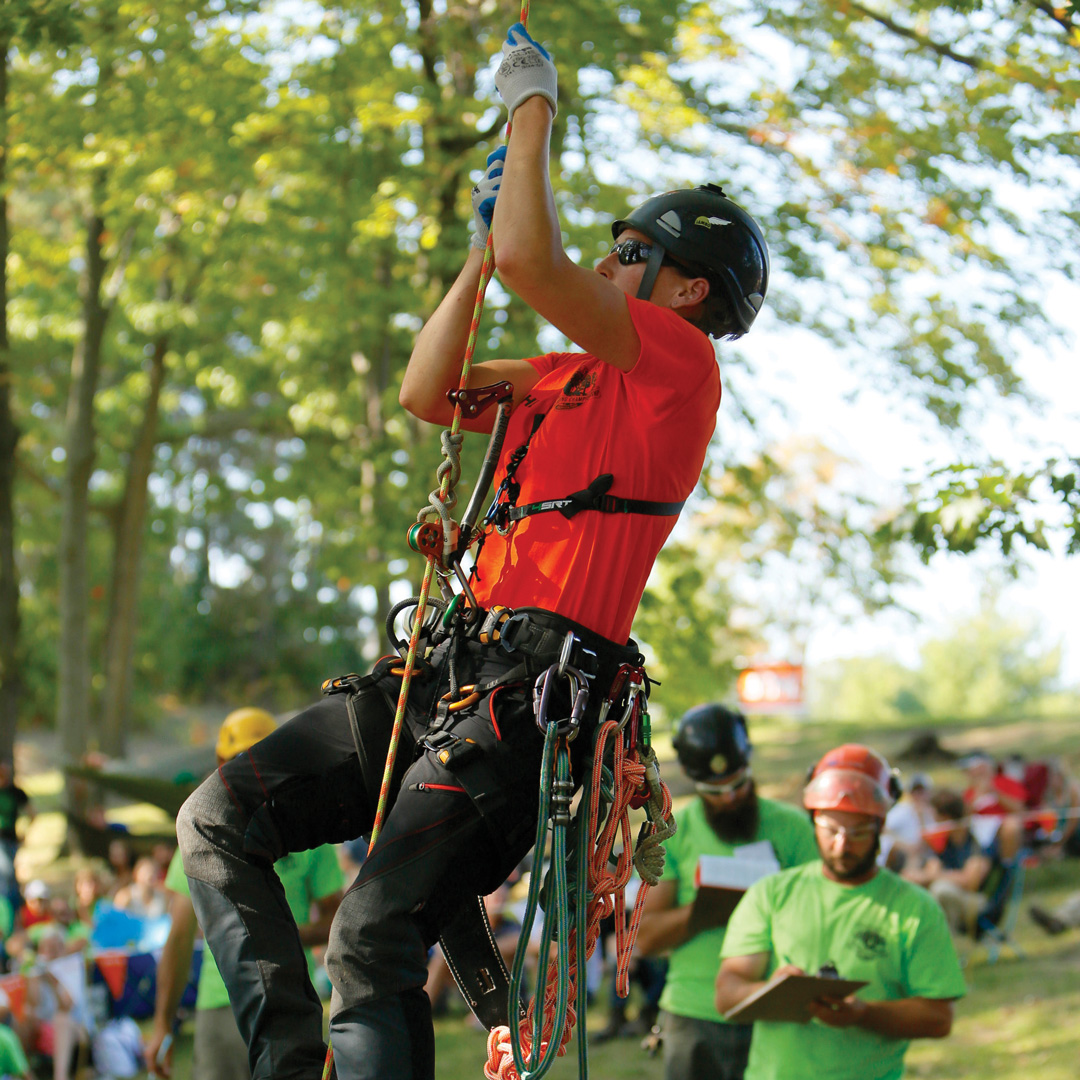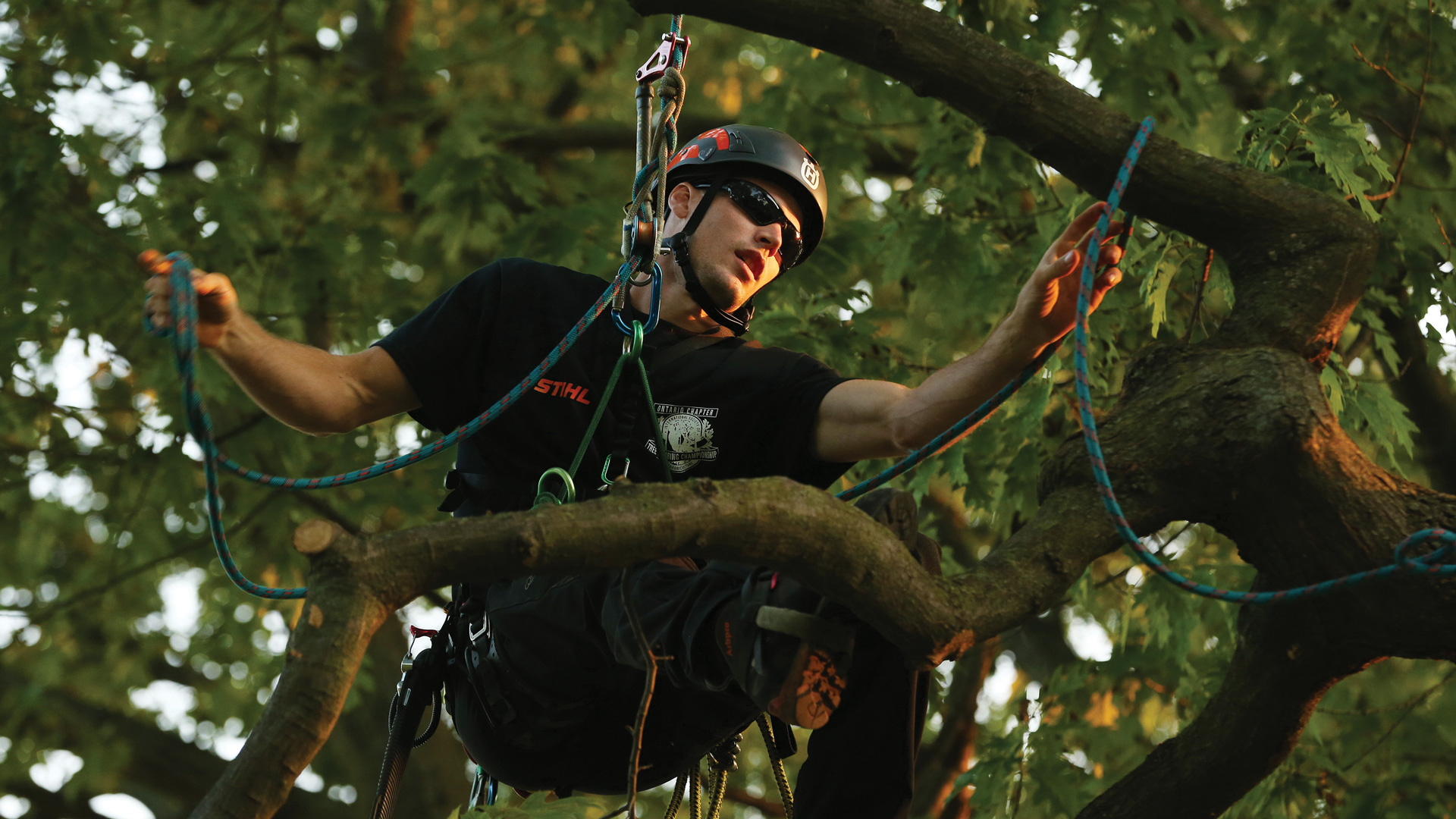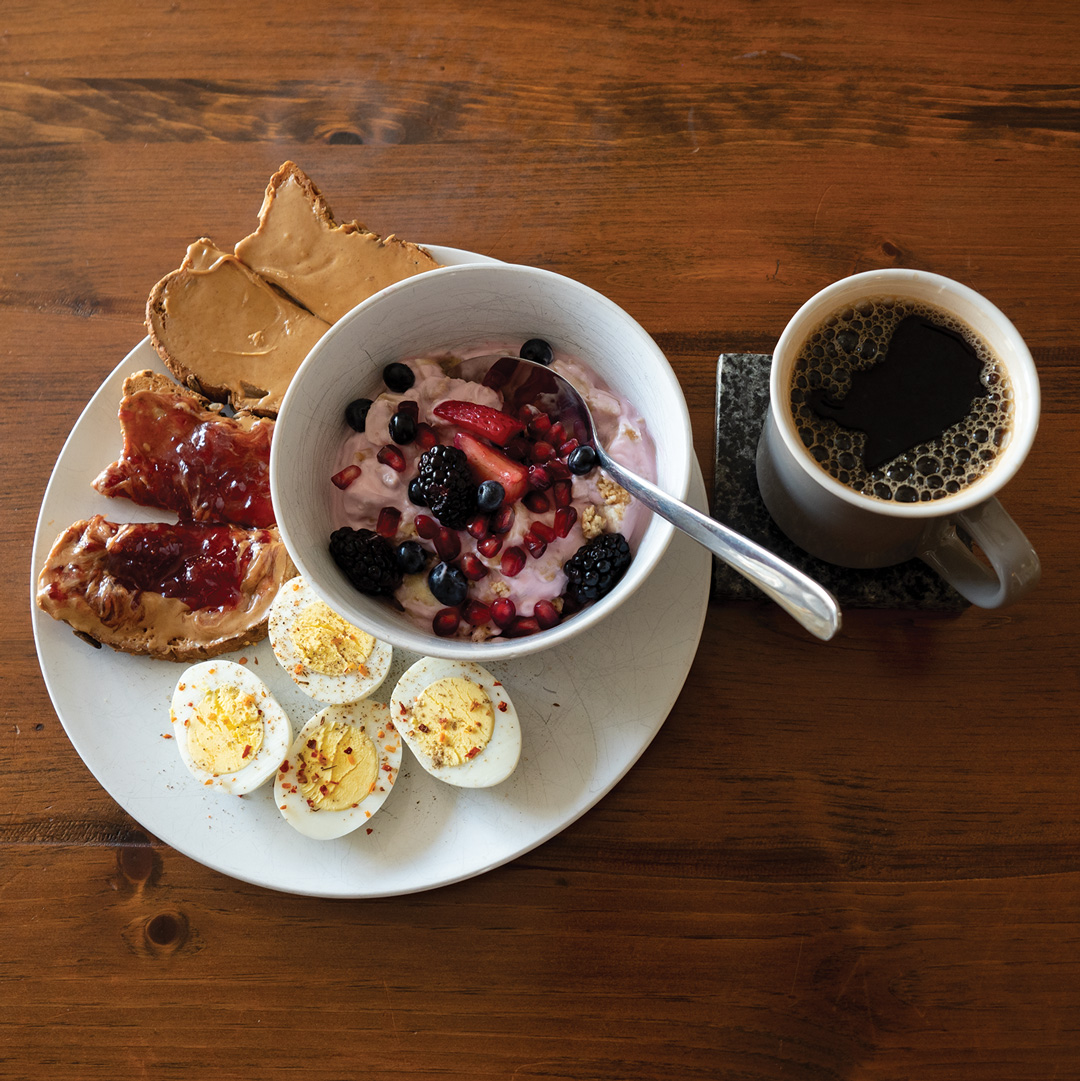Hydration & Nutrition For Industrial Athlete Climbers
Industrial athletes aren’t just arborists who choose to compete.
“As industrial athletes, we use our bodies as tools and the fuel that we put in our bodies can dictate the performance of the tool,” Brooklin Tree Care owner, arborist, cyclist, runner, and expedition leader Eric Batty says. “I approach what I do every day for work the same way I would a day-long hike.”
Every day is an athletic event for working arborists who spend most of their time climbing, lifting, hauling, and otherwise working hard, often in less-than-ideal conditions. So whether or not you’re planning to take part in an In-Person or Virtual Tree Climbing Championship, you can still dial in your nutrition and hydration to feel better, recover faster, and be more efficient in the tree. Here, two top tree climbers and one arborist-slash-adventurer share their best advice.
Understand the stresses
It’s a lot of endurance
“Back in the day, you got up, you didn’t eat breakfast, you got to work. Maybe you’d have a big, heavy fast-food lunch, then you’d go home and eat as much food as you could. But that doesn’t really work in the long term,” says Batty. “There are some days where I’m burning 7000 calories in the tree. And if it’s hot out, not only am I working hard physically, it’s also stressful, so your heart rate is always elevated, and you get dehydrated pretty quick. It’s actually really similar to long-distance backpacking. It’s a lot of endurance with a few harder efforts thrown in throughout the day. So you need to fuel for that for the day, and also to do it again tomorrow and the next day.”
Be body aware
“Our industry is awesome, but there’s definitely a ‘prove yourself’ mentality, especially when you’re first getting started,” says Strating. “It’s a steep learning curve and when newcomers get on a crew and see how hard-working, skilled and talented their crewmates are, they feel like they need to be at that level right away. So they’ll bypass their health and nutrition, and skip drinking or eating lunch in order to keep up. I’d rather stop and take a break and listen to my body. And I tell the crew that they should do the same thing. It’s not that you’re ‘not pulling your weight’ or you’re ‘being lazy.’ You’re actually being really smart, being aware of how you’re feeling.”
“Because I do a lot of long bike rides and runs, I already understand what my body needs when it comes to electrolytes and fuel, so I never really run into the issue of bonking* or cramping at work,” adds Batty. “But I know a lot of other people do.”
*In endurance sports such as cycling and running, hitting the wall or the bonk is a condition of sudden fatigue and loss of energy which is caused by the depletion of glycogen stores in the liver and muscles.
Sip water all day
“Always be sipping when you can — whenever you have the chance,” Strating says. As a rule, your goal should be to avoid feeling thirsty: Batty points out that typically, feelings of thirst mean you’re already becoming dehydrated, and it’s going to be hard to come back from that. So having easy access to water, even up in the tree, is critical. Aim to sip all day, rather than chug a bottle here and there. Strating and Batty both prefer clipping a bottle to their belts when they’re up in the tree, but if you tend to get thirsty—or hungry—often, consider opting for a hydration pack.
That’s what Joel Dreise, Ontario’s champion tree climber, arborist with Diamond Tree Care and recreational mountain biker, does on hot days. A hydration pack allows for easy hands-free drinking, and most packs can easily hold 1.5 litres of water, plus plenty of snacks and supplies in the pockets. “Sometimes we have a really big job, so I’ll be in the tree from 8 AM until 2 PM,” he says. “I know I’ll be hungry and thirsty before we stop for lunch, so I have granola bars in my pack, and plenty of water. It’s a lifesaver.”
Add electrolytes
Electrolytes—sodium, potassium, and magnesium—are critical for keeping your body functioning and your neurons firing. Drinking gallons of straight water on a hot day could actually leave you in bad shape, if you’re not supplementing with at least some sodium. Because of that, consider adding a pinch of sea salt to your bottles, or swap every other bottle of water for a sports drink (Gatorade or Nuun, an electrolyte tab) to add flavour as well as electrolytes to plain water.
“I use an electrolyte tab, or I’ll mix a bottle with half Gatorade, half water,” says Strating. “If you just keep drinking water, you end up hitting a wall where you start feeling lethargic, and you start noticing you’re tripping on branches that you normally wouldn’t trip on. Or you end up with big muscle cramps.”
Smart Nutrition
Don’t skimp on breakfast
“Personally, I always have a big breakfast,” says four-time North American Women’s Champion and past International Champion tree climber and arborist for the City of Mississauga Krista Strating. “Every day is gonna be a little bit different. I try to have protein and some carbs, like bacon and eggs with toast, or a big yogurt bowl with fruit and granola. Because our job is very intense, sometimes there’s not much time to stop and eat. So I want to start the day fueled up.”
The big breakfast with protein and carbs is exactly what a high-performing athlete would eat before training, so it makes sense. For Batty, his pre-work meal resembles a pre-race meal. “I make sure I have a good mix of proteins, carbs and fat: three eggs, toast with butter and jam, a cup of orange juice, probably too much coffee… That’s a good baseline to get going for the day.”
Snack regularly and stop for lunch
“Sometimes, it’s easy to get super macho and decide that you’re not going to take a break for lunch,” says Batty. “But that’s not sustainable. We’re hard on our bodies. So I will always stop for lunch, even if it’s just a few minutes, just to give my body a break. I try to keep lunch pretty light and just snack throughout the day.”
Keep lunch simple, but make it satisfying.
“My lunch is usually a ham, cheese, lettuce, and cucumber sandwich, with a small container of mixed nuts and some Medjool dates in there,” says Dreise. “I also have an apple, granola bars, and some other easy snacks for the rest of the day.”
“I won’t pack like a salad because they just take so long to eat, and a lot of the time, we don’t have a huge amount of time to sit down for lunch,” says Strating. “My go to is an egg salad sandwich. It’s easy and quick to eat. I’ll add a lot of fruit in the summer as well, because it’s the only thing that’s really appetizing when it’s hot. If you’re not eating your lunch because things get too busy, still make sure you have something easy to eat instead. I always keep some granola bars and cookies in the truck for emergency fuel. But try to take that lunch break, even if it’s just a few minutes.”
Make dinner healthy
After a long day spent fuelling for performance with easy-to-digest foods, dinner is a good chance to make sure you’re getting plenty of micro-nutrients through vegetables, while also replenishing your muscles with carbohydrates and protein. It doesn’t have to be complex: Picture a plate that’s half covered in vegetables, then the rest of the plate should be split between carbohydrates (like potatoes, rice, or bread) and protein (like beef, chicken, seafood, or tofu) plus some healthy fat (like avocado chunks or a drizzle of olive oil).
“My dinners are usually simple: Some protein, some carbs, and vegetables,” Dreise says. “So we’ll have burgers with some grilled veggies, or chicken with rice and veggies.”
Batty keeps dinners interesting but easy to prepare by opting for the Hello Fresh meal delivery service, which mails four days worth of meals to their doorstep weekly. “It’s great healthy options, it’s all locally sourced, it’s easy to prepare, it’s not too expensive, and it’s just such a huge time-saver,” he says. “We get four servings for each meal so we can use leftovers for lunch the next day, so it saves even more time that way.”
You can still indulge
Eating well doesn’t mean skipping your favourite bakery treats, chips and guacamole, or margaritas. Aim for balance, not perfection. “Usually I get home, I’ll have some chips, maybe a beer,” says Batty. “It’s not that I’m trying to eat perfectly healthy all of the time. I like sweets, I like salt, I like junk food. I try to get around 80 percent of my fuel from good, whole food sources. That’s my balance point. So yes, I eat dessert every night. But I also have a healthy breakfast, lunch, and dinner. And there’s no point denying yourself any treat that you love, as long as you’re eating it in moderation.”
Treat your body like it’s an essential tool
“When I started out, I didn’t do anything different. I just showed up and climbed,” says Strating. But over the years, she’s realized taking time to focus on nutrition, hydration, and even post-work stretching are becoming vital to her overall health and wellbeing—and her on-the-job performance. “My body is no different than our chainsaws, our chippers, or our trucks. They get regular maintenance. We shut them off and give them a break during the day. Our bodies should get the same thing. If I push it too far, I’m going to hurt myself. Think about yourself in terms of your whole career, not just today. And treat your body better than you treat your equipment.”
Molly Hurford is a journalist in love with all things cycling, running, nutrition and movement-related. When not outside, she’s writing about being outside and healthy habits of athletes and interviewing world-class athletes and scientists for The Consummate Athlete podcast and website. She also coaches running and cycling, as well as yoga both online and IRL in Collingwood, Ontario. consummateathlete.com






